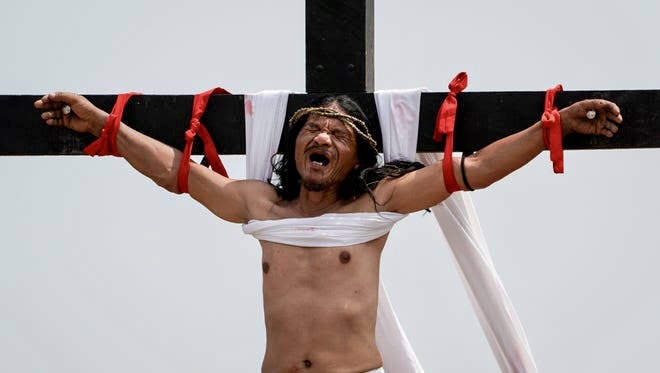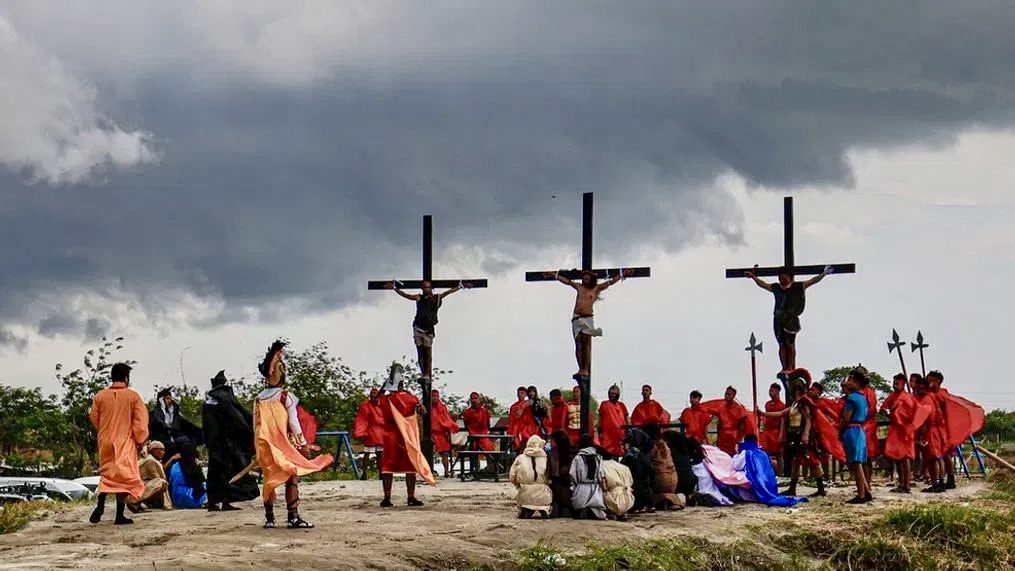
Faith Nyasuguta
In the rural communities of Pampanga province, north of Manila, a Filipino villager, Ruben Enaje, has undergone the ritual of being nailed to a wooden cross for the 35th time, reenacting Jesus Christ’s suffering on Good Friday. This annual tradition draws over a hundred spectators and has become a religious spectacle in the region.
Enaje, a 63-year-old carpenter and sign painter, has embraced the role of “Christ” in the Lenten reenactment of the Way of the Cross, despite his age and physical limitations. He sees it as an opportunity to pray for peace in conflict-ridden regions such as Ukraine, Gaza, and the South China Sea.
The resumption of the ritual last year, after a pause due to the pandemic, reflects Enaje’s commitment to fulfilling requests from villagers to pray for various needs, including the recovery of sick relatives. He believes that in times of global turmoil, prayers for peace are more essential than ever.
Enaje’s concerns extend beyond international conflicts to include local issues like natural disasters in the southern Philippine provinces. Despite his physical challenges and uncertainty about future participation, he remains dedicated to the tradition as a form of thanksgiving and intercession for others.
During the crucifixions, Enaje and fellow devotees endure physical hardships, carrying heavy wooden crosses and enduring the pain of being nailed to them. The ritual, which includes actors portraying Roman centurions, attracts tourists like Maciej Kruszewski from Poland, who seek to understand Easter traditions from different cultural perspectives.
Apart from the crucifixions, other penitents engage in acts of self-flagellation and barefoot processions, reflecting the unique blend of Catholicism and folk traditions in the Philippines. While some view these practices as expressions of faith, church leaders advocate for alternative forms of devotion, such as charitable works, to avoid physical harm.

Enaje’s journey of faith and devotion exemplifies the enduring traditions and spiritual beliefs deeply rooted in Filipino culture, despite evolving attitudes toward religious practices. As the world faces ongoing challenges, his commitment to prayer and sacrifice serves as a reminder of the enduring quest for peace and spiritual fulfillment.
The crucifixion ritual, while controversial and sometimes criticized by church leaders, holds deep cultural significance for many Filipinos. It is not only a religious act but also a form of cultural expression and communal solidarity.
Enaje’s personal history adds layers of meaning to the ritual. Having survived a fall from a three-story building in the 1980s, he sees each crucifixion as an act of thanksgiving for what he considers a miraculous survival. Over the years, he has extended the ritual to pray for the recovery of loved ones and to express gratitude for blessings in his life.
Despite his advancing age and physical limitations, Enaje remains committed to the tradition, viewing it as his calling and a way to serve his community. His dedication has earned him widespread recognition and respect, both locally and internationally.
As Enaje and his fellow devotees endure the physical and emotional challenges of the crucifixion ritual, they embody the resilience and faith of the Filipino people. Their actions remind us of the enduring power of religious traditions to inspire hope, foster community, and offer solace in times of trial.
RELATED:




